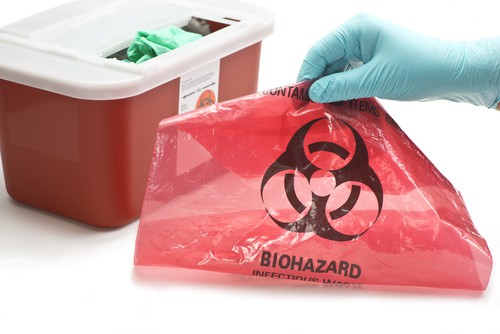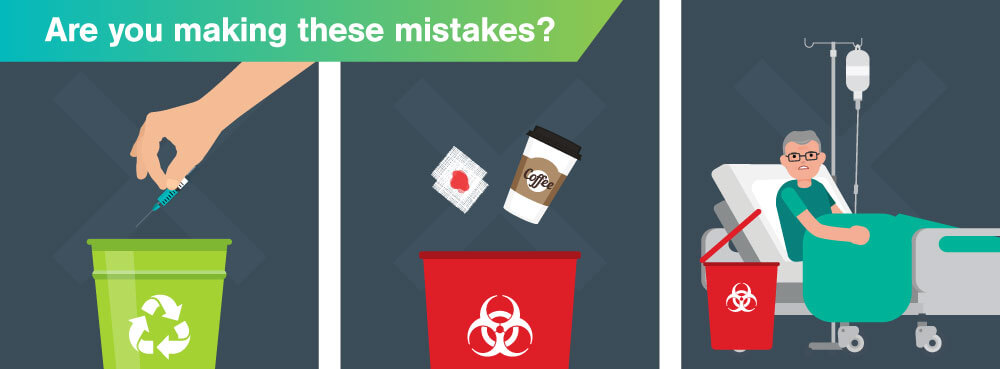Efficient and Liable Medical Waste Removal: Protecting People and the Planet
Wiki Article
Lasting Solutions for Medical Garbage Disposal
The proper administration and disposal of clinical waste is vital in maintaining a sustainable and safe healthcare system. As the quantity of clinical waste remains to climb, finding lasting options comes to be increasingly important. This requires the fostering of environmentally friendly and effective methods for dealing with clinical waste. This introduction will certainly explore numerous lasting options for medical waste disposal, including waste partition and sorting, on-site waste treatment systems, recycling and reuse programs, waste-to-energy conversion technologies, along with cooperation and education campaigns. By executing these options, medical care centers can not only reduce the ecological effect of medical waste, yet additionally guarantee the safety of healthcare workers and the public.Waste Segregation and Sorting
The process of waste partition and sorting is critical in making certain correct monitoring and disposal of clinical waste. Medical waste is identified right into various classifications based on its prospective risk to human wellness and the environment. Correct partition and sorting of waste aid to lessen the danger of contamination and ensure that each kind of waste is taken care of and gotten rid of properly.The initial step in waste partition and sorting is to recognize and divide different kinds of medical waste at the point of generation. This includes recognizing the different classifications of waste, such as transmittable waste, sharps waste, pharmaceutical waste, and chemical waste. medical waste disposal. Each classification needs particular managing and disposal approaches to avoid injury to medical care employees, individuals, and the setting

On-site Waste Treatment Systems
Continuing from the previous subtopic on waste segregation and sorting, a reliable remedy for sustainable medical garbage disposal is the execution of on-site waste therapy systems - medical waste disposal. These systems permit healthcare facilities to treat their clinical waste on-site, decreasing the requirement for transportation and disposal at off-site facilities. On-site waste therapy systems generally consist of innovations such as autoclaves, microwave systems, or chemical disinfection devicesAutoclaves, commonly used in healthcare settings, utilize high-pressure vapor to sanitize and treat clinical waste. This process efficiently kills bacteria, infections, and other possibly harmful bacteria, providing the waste secure for further handling and disposal. Microwave systems, on the various other hand, usage microwave radiation to warmth and treat the waste, accomplishing similar results to autoclaves.
Chemical disinfection units include the use of chemicals to decontaminate and deal with medical waste. These units can use different anti-bacterials, such as chlorine-based solutions, to reduce the effects of virus and minimize the risk of contamination. The treated waste can then be safely taken care of in normal waste streams or go through more treatment, such as shredding or incineration.
Applying on-site waste therapy systems uses several benefits. It minimizes the ecological impact related to transferring medical waste to off-site facilities, lessening carbon discharges and the risk of mishaps throughout transport. In addition, it provides healthcare centers with even more control over the therapy procedure, guaranteeing conformity with guidelines and reducing the potential for unapproved accessibility to delicate medical waste.
Recycling and Reuse Programs
To even more improve lasting clinical waste disposal practices, healthcare centers can execute recycling and reuse programs, building on the foundation of on-site waste treatment systems. Reusing and reuse programs use an additional layer of environmental responsibility by drawing away clinical waste from garbage dump and searching for alternative uses for sure materials.One trick element of recycling and reuse programs is the partition of waste at the resource. medical waste removal. By implementing proper waste segregation protocols, health care facilities can separate recyclable materials, such as plastics, steels, and glass, from non-recyclable waste. This enables the reliable recycling of these products, minimizing the demand for virgin sources and reducing the ecological effect of clinical garbage disposal
In addition to recycling, medical care facilities can check out opportunities for reusing certain clinical products. Single-use things like medical drapes and dress can be sterilized and recycled, reducing the requirement for brand-new materials and lessening waste generation. Reusable sharps containers can additionally be utilized, minimizing the amount of plastic waste produced from disposable containers.
Applying recycling and reuse programs needs proper facilities and training - WasteX Medical Waste Disposal. Health care centers my website need to spend in suitable recycling containers, segregation systems, and sanitation tools, as well as guarantee personnel are educated on proper waste monitoring methods
Waste-to-Energy Conversion Technologies
One possible approach to deal with clinical waste disposal sustainably is with the use of waste-to-energy conversion technologies. These technologies provide an encouraging solution to the growing issue of clinical waste, which poses significant ecological and public wellness dangers. Waste-to-energy conversion includes transforming the organic components of medical waste right into energy, such as warmth or electrical energy, through various procedures like incineration, pyrolysis, and gasification.Incineration is the most commonly used waste-to-energy modern technology for clinical garbage disposal - WasteX Medical Waste Disposal. It involves the regulated burning of waste at high temperature levels, transforming it right into ash, gases, and warm. This heat can be utilized to produce heavy steam, which can then be exchanged power
Pyrolysis and gasification are more recent technologies that offer even more eco-friendly options to incineration. Pyrolysis involves warming the waste in the lack of oxygen, leading to the manufacturing of gases and char. Gasification, on the other hand, converts waste into an artificial gas or "syngas" that can be made use of as a fuel for electrical power generation or other industrial processes.
These waste-to-energy conversion modern technologies not only reduce the quantity of medical waste but additionally provide a resource of renewable resource. Additionally, they can help in reducing greenhouse gas emissions and reliance on fossil gas (WasteX Medical Waste Disposal). It is vital to ensure that these modern technologies are implemented with proper discharges manage steps to decrease any kind of possible unfavorable influences on air quality and public health and wellness.
Partnership and Education Campaigns
Cooperation amongst stakeholders in the healthcare market is critical for applying lasting services for medical waste disposal. In order to efficiently address the challenges related to medical waste management, it is important for health care facilities, waste monitoring business, regulatory authorities, and other pertinent parties to collaborate.
Additionally, education and learning initiatives play a crucial role in promoting lasting methods. Medical care specialists need to be familiar with the environmental effect of improper waste management and the importance of applying lasting services. Educating programs and academic materials can aid them recognize the proper segregation of waste, the usage of green alternatives, and the advantages of waste-to-energy conversion innovations.
Partnership and education can likewise help with the growth of guidelines and guidelines for clinical waste disposal. By interacting, stakeholders can add to the development of comprehensive plans that make certain risk-free handling, transport, and treatment of clinical waste.
Conclusion
To conclude, taking on sustainable solutions for medical garbage disposal is critical in order to minimize the negative influence on the environment and public health. Waste segregation and sorting, on-site waste therapy systems, recycling and reuse programs, waste-to-energy conversion technologies, and cooperation and education campaigns are all vital strategies to achieve this goal. Implementing these solutions needs cooperation in between healthcare facilities, waste management business, and federal government firms, in addition to constant education and awareness projects.The process of waste partition and sorting is important in guaranteeing appropriate monitoring and disposal of clinical waste.The very first action in waste partition and sorting is to identify and divide various types of clinical waste at the factor of generation. This involves recognizing the different categories of waste, such as infectious waste, sharps waste, pharmaceutical waste, and chemical waste.Continuing from the previous subtopic on waste segregation and sorting, an efficient option for lasting medical waste disposal is the implementation of on-site waste therapy systems. The cured waste can after that be securely disposed of in normal waste streams or undertake more therapy, such as shredding or incineration.
Report this wiki page